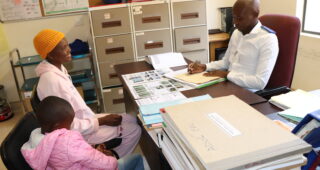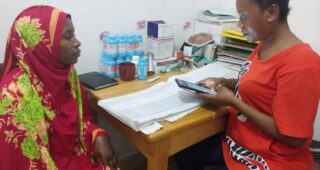The CDC’s Critical Role in Ending Global HIV and Tuberculosis
Recently, we joined RESULTS and UNAIDS on Capitol Hill to hold a critical conversation about the the U.S. Centers for Disease Control and Prevention’s (CDC) invaluable role in ending global HIV and tuberculosis (TB).
EGPAF’s President and CEO, Charles Lyons opened the discussion with proof of progress against these epidemics. Through the PEPFAR program, EGPAF has partnered with CDC for the past 16 years to implement programs aimed at reducing the burden of HIV and TB on families.
But when our work with CDC began, the outlook for those living with HIV was grim, particularly for those central to our mission, children. There were questions as to whether interventions like preventing HIV transmission from mother to child were even possible in sub-Saharan Africa.
But it was and is possible.
Many of the critical advances, which have led to a more than 60% reduction in new infections in children are due to U.S. investments in strengthening and health systems in highest burden countries.
CDC’s model has been paramount to these efforts, allowing people to be effectively reached without building a parallel health system.
At the event, a panel of global health experts, composed of Dr. Angeli Achrekar, Acting Principal Deputy Coordinator, Office of the U.S. Global AIDS Coordinator and Health Diplomacy; Dr. Hank Tomlinson, Director of the CDC’s Division of Global HIV & TB; and Dr. Joanne Carter, Executive Director of RESULTS, discussed the vital role U.S. investments play in continuing the fight against global HIV and TB and the innovations needed on the frontlines to end these epidemics once and for all.
Dr. Achrekar explained that the U.S. global HIV and TB response is driven by the core expertise of each partner agency. The CDC contributes renowned epidemiological experience, grounded in over 70 years of work both within the United States and across the globe. As Dr. Tomlinson described,
“The CDC brings not just our knowledge about HIV, but also what we’ve learned in fighting polio, malaria, influenza, and countless other diseases.”
In addition to this institutional knowledge, the CDC successfully uses data to shape its HIV and TB programming – allowing an effective and efficient response.
The CDC also plays an indispensable role in laboratory systems strengthening and technological innovation. Dr. Tomlinson argued, “Everything starts with a laboratory… to respond to something, you have to know what that thing is.” Laboratory advancements and new diagnostic tools, such as the GeneXpert which can provide a rapid TB diagnosis at the point of care, have proven to be a crucial part of the fight against HIV and TB.
The event also featured a photo exhibit from the CDC and world-renowned photographer Thom Pierce, “Faces from the Frontlines” that showcased images and stories of those at the forefront of CDC’s global response, at the very epicenter of these epidemics.
Although unprecedented progress has been made in the global response to HIV and TB, these diseases remain significant threats.
In 2017, almost 37 million people globally were living with HIV, including 1.8 million children, and more than 10 million people were infected with TB. TB is the leading cause of death for people living with HIV, accounting for approximately one in three AIDS-related deaths.
The global work of the CDC is central to addressing these diseases. Scaling up the CDC’s current health interventions and reaching more people would have a tremendous impact. The panelists agreed that even modest increases in funding could radically change health outcomes, particularly for TB.
As Dr. Carter explained, “This is a transformational moment for TB and HIV. We need to grab the moment and invest in these areas.”
The good news? You can help! Click here to urge Congress to prioritize global health funding today.
Team EGPAF
Strengthening Local Capacity; Tuberculosis



